Growing succulents is a beginner-friendly endeavor, but it can be a challenge to achieve thriving succulents. With the wide range of varieties available, there’s a succulent for every purpose. To make it easier, remember the simple steps to thriving succulents. Succulents require bright light, proper drainage, and the right soil to thrive.
Table of Contents
Choosing the Right Succulents
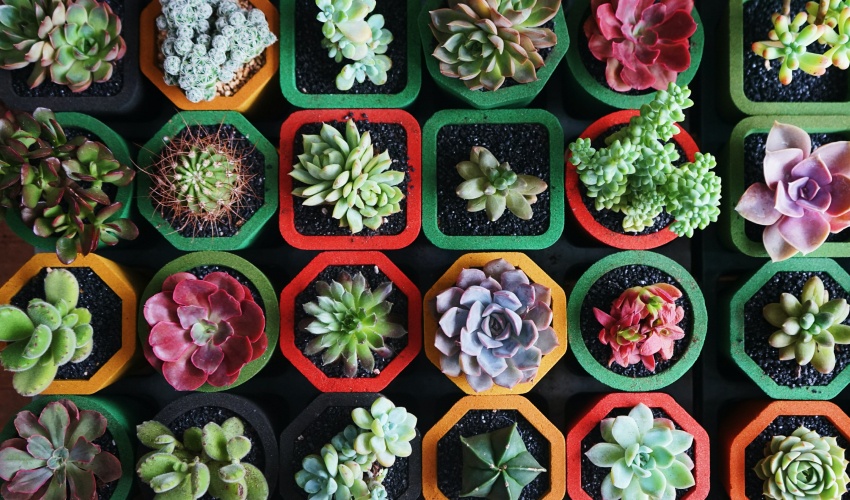
The first step in caring for a succulent is to understand its needs. Succulents generally prefer full sun, with some varieties also tolerating shade. Remember that indoor environments may not suit all succulents when shopping for a new succulent. A succulent that prefers a shady environment will have a greater chance of success indoors than one that likes full sun exposure. Succulents should be selected according to the environment in which they will be planted.
Success Requires the Right Pot
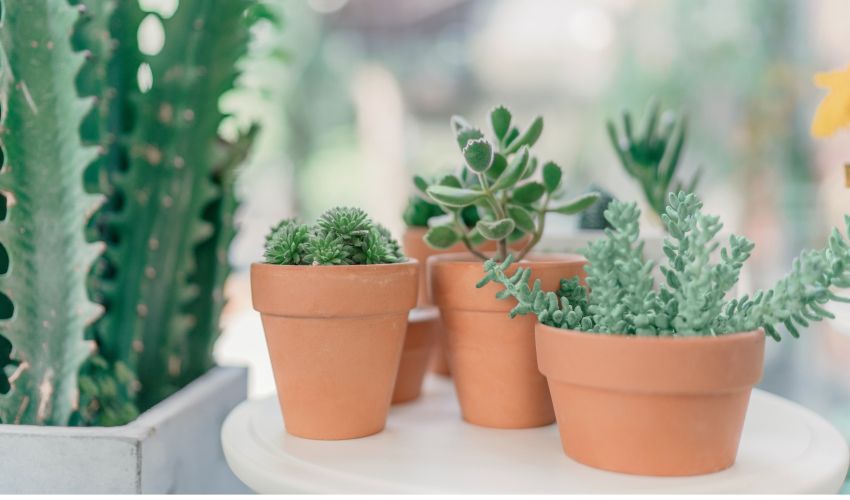
It’s crucial to find the right pot for your succulents. Make sure the pot you choose has drainage holes to allow proper drainage. When planting a succulent, ensure the pot is the right size for its needs. A container should not be deeper than three times its width.
Drainage is Essential for Succulents
Succulents are known for their fleshy, thick leaves that store water and nutrients. Good drainage is vital for succulents to thrive and to prevent root rot. No matter the size of your container, succulents should be able to drain excess water from their leaves. Fungal infections and root rot can be caused by letting your succulent sit in excess water.
Use the Right Type of Soil
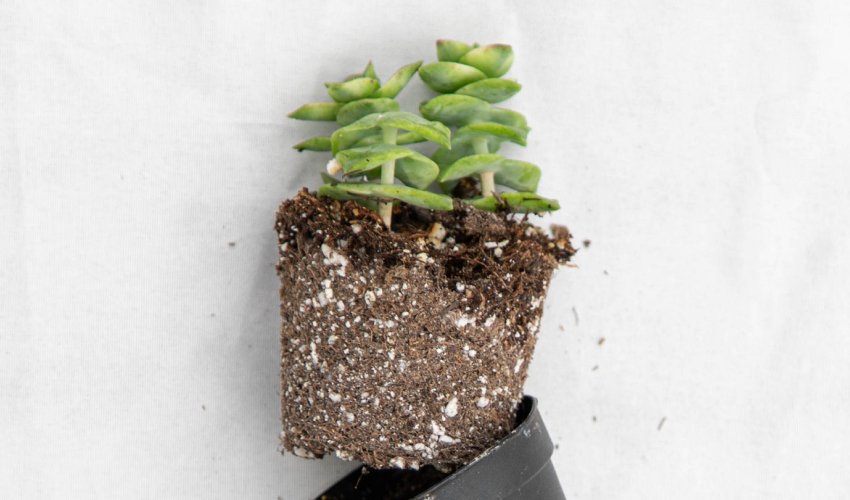
Most succulents do well with a gritty mixture that drains quickly and doesn’t retain too much water. It is not recommended to use a regular potting mix for your succulents; cactus soil is best. Avoid peat-based potting soil since it retains too much water and causes root rot. To improve drainage in soil, use sand, gravel, and volcanic rock to create well-draining soil.
Group Succulents With Similar Needs
Succulent plants require less water than other plants, so they’re suitable for groups with similar watering needs. Consider doing the same if some of your succulents won’t like the harsh sun during the summer months. If you have a garden with multiple areas, it helps to prioritize which plants should receive the most water.
How and When to Water Succulents
Watering succulents is easy, but it’s essential to do it correctly. The most common mistake people make when watering their succulents is over-watering them. Succulents don’t need a specific amount of water at a time and should be allowed to dry out between watering sessions. Most succulents prefer low humidity and infrequent moisture.
If you are a beginner, I recommend not using a watering schedule. The best thing you can do for your succulents is to check them regularly for signs of thirst. It is especially true for those who have indoor succulents.
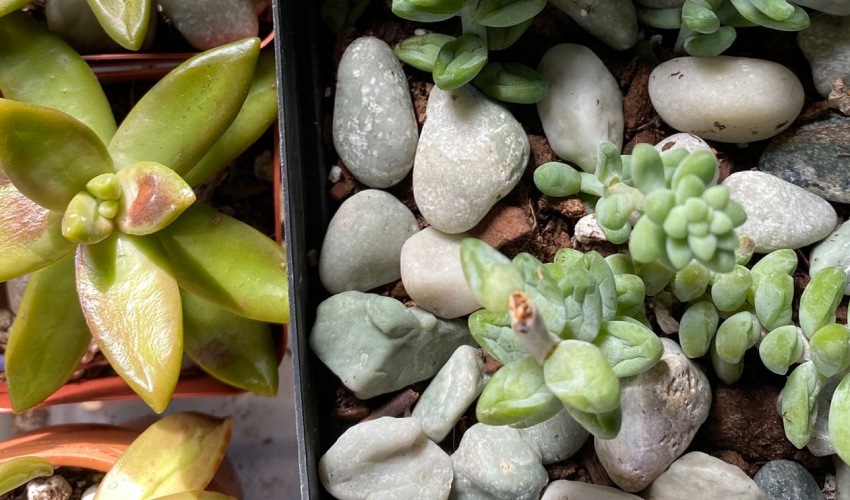
Signs your succulent is thirsty
- Dry soil
- Wrinkled leaves
- Shriveled leaves
- Soft leaves
- Leaves that feel rubbery or bend easily
- Aerial roots – can be common in some succulents or high humidity conditions.
- Collapsed or drooping leaves
- Crisp, brown dying leaves
Signs your succulent has been overwatered
- A loss of color or discoloration of the leaves
- Change in shape or form of leaves
- Translucent leaves
- Squishy leaves or mushy leaves
- Leaves dropping
For succulents and most house plants, I use the bottom watering method. Bottom watering ensures that the succulent receives enough water. A succulent’s roots grow stronger by bottom watering, promoting healthy root systems and growth.
Temperature Needs
Succulents are hardy, but they still need to be taken care of. The best way to do that? Find out how the care needs of your succulent. Use the Succulent Types Gallery and Succulent Care Guides to learn to care for your specific type of succulent.
Despite some succulents being able to tolerate freezing temperatures and frost during the winter, most can’t and will get damaged from the frost. Some succulents are more resistant to heat than others, but many will still suffer in the scorching sun. Sunburned or brown leaves are a common sign that your succulents are getting too much sunlight.
Give Succulents Some Light
Succulents need a mix of sunlight and shade to grow healthy; low-light conditions are dangerous to succulents. It is generally recommended that succulents receive at least 4-6 hours of sunlight per day. The color of the plant is a tip-off to its light needs. If there isn’t enough light where you are growing them, they’ll be more susceptible to diseases and will develop etiolation.
Know When to Fertilize Them
Fertilizing succulents once a year should be sufficient. Use any well-balanced organic fertilizer, cut the dose in half, and provide it at the beginning of the succulents’ growing season.
Common Succulent Issues
Check your plants often for signs of infection or infestations, so you can treat them immediately if necessary. Isolate any infected plant to prevent the issue from spreading to your other succulents.
Succulent Pests
A succulent grown in very wet soil without adequate drainage is susceptible to bugs and pests. Common succulent pests include:

- Mealybugs – look cotton-like, and live in clusters on leaf veins, joins, and the underside of leaves. Also can live in succulent roots. Treat with 70% isopropyl alcohol in a spray bottle, and keep spraying until they don’t come back.
- Spider Mites – very tiny, look like brown-red dust. Treat with neem oil.
- Aphids – These pests suck sap from the plant, making it weaker and susceptible to diseases. Treat with Pyrethrum-based pesticide.
- Scale – white cotton-covered shells. It can be removed by scraping off and using safer soap or neem oil on the leaves.
Root Rot
The most common killer of indoor succulents is root rot. New succulent enthusiasts are dedicated to caring for their plants, which is excellent, but this passion often leads to overwatering. Stems or leaves that have turned brown or black are common signs of root rot.
Etioliation
The etiolation or stretched succulent occurs when a succulent grows in partial or complete darkness. It produces long, weak stems, small leaves with long internodes, and a yellow color known as chlorosis. A succulent stretches for one main reason: The lack of sunlight. Making cuttings from an etiolated succulent is recommended to propagate to save your plant.
Succulent Diseases and Fungal Infections
Fungal infections are rapidly spreading diseases that can kill plants when not treated. Avoid high humidity and overwatered soil to prevent fungal growth. The common fungal diseases are:
- Anthracnose – tan-colored rot with red, pink, or orange pustules. It is caused by a cluster of fungal diseases that belong to the genus Colletotrichum that affect the plant tissues. Treated by removing the damaged leaves and stopping the spread.
- Epiphyllum mosaic disease – common amongst cacti. Pale yellow sunken spots are typically present, spreading from the plant’s edge to the center.
- Rhizoctonia Root Rot – occurs along the growing medium’s surface, so it often attacks the stem where it meets the soil. Stems appear dry and shriveled.
Act quickly if you notice spotting or webbing on the soil of shriveling leaves. Fungal infections can usually be treated with a plant-friendly fungicide if caught early enough.
There are succulents for almost any type of weather, soil problem, or growing condition. Some are drought-tolerant, some need rich and well-drained soil, some don’t need full sun, and some need full sun. It all depends on the specific plant. By following these tips in this post, you can grow thriving succulents.
Similar Topics in: Succulents
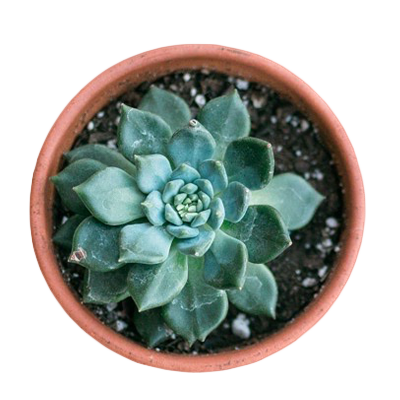
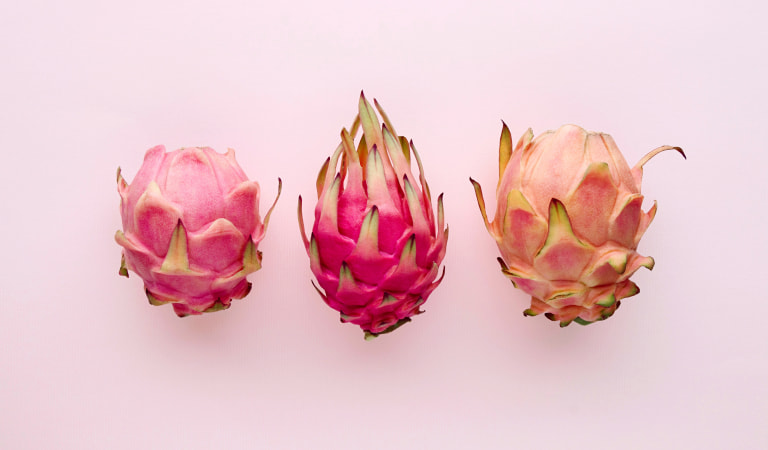
Leave a Reply